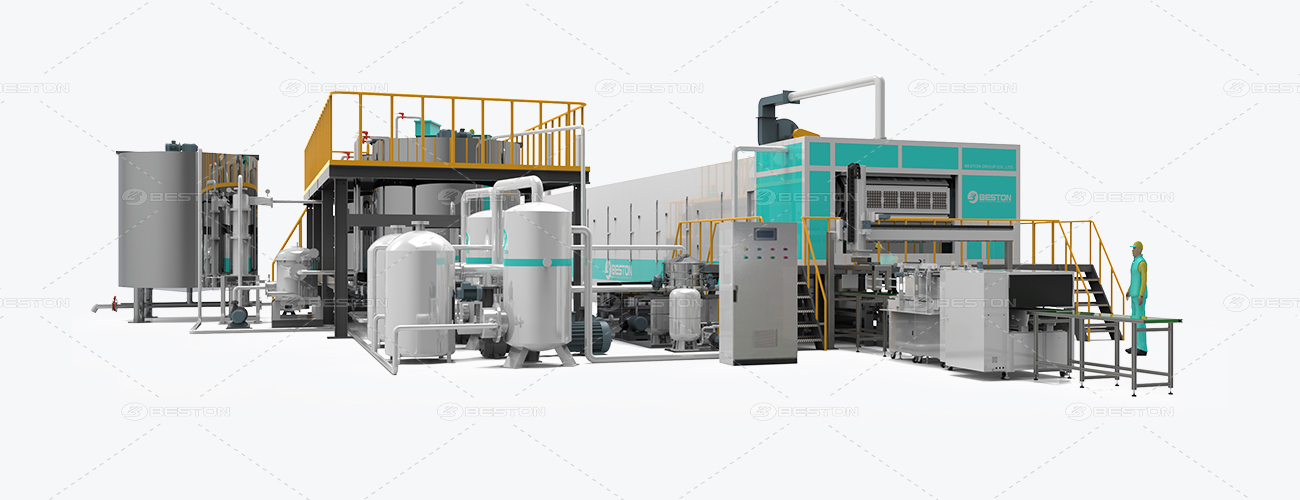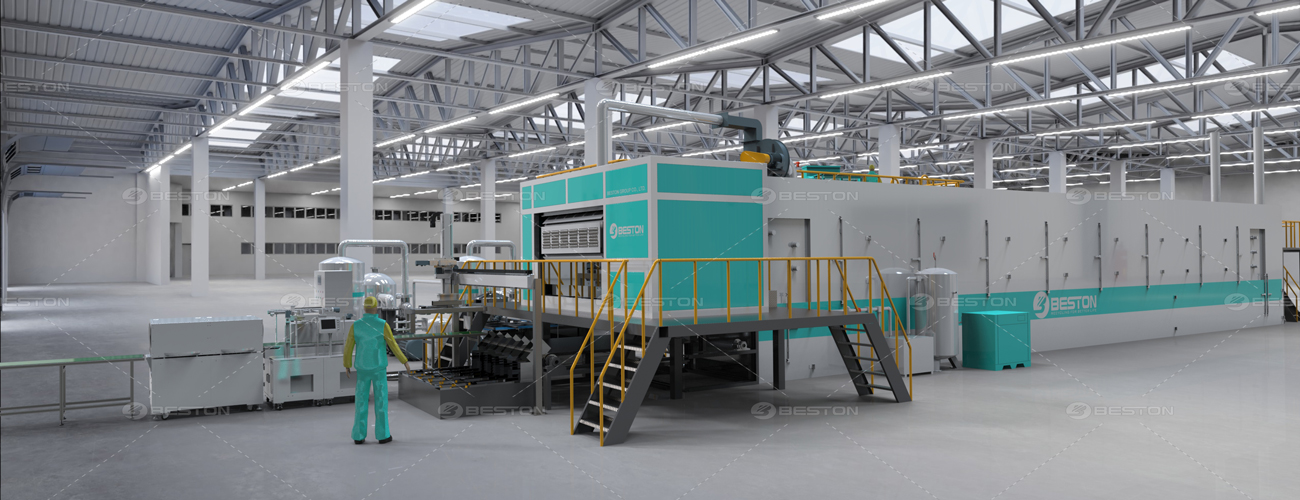The drying process is a critical stage in egg tray machine production, directly impacting the final product’s quality, energy consumption, and overall efficiency. As egg tray manufacturing continues to evolve, optimizing the drying phase can significantly reduce production costs and improve output consistency. This article explores key strategies for enhancing the drying process in the production of egg trays, with a focus on technical considerations and practical solutions.
Understanding the Drying Process
In egg tray production, the drying process is essential for ensuring that the molded pulp is properly hardened. After the egg tray machine forms the trays from wet pulp, the drying phase removes excess moisture, allowing the trays to reach the appropriate structural integrity for packaging and transportation. Insufficient drying can result in weak trays, while over-drying can lead to brittleness and increased energy consumption. Balancing these factors is crucial for optimizing the production process.
Energy Efficiency in Drying
One of the primary challenges in drying egg trays is managing energy consumption. Traditional drying methods, such as natural air drying or the use of hot air ovens, can be energy-intensive. However, advancements in drying technology, particularly in automatic egg tray machines, have introduced more energy-efficient alternatives. These machines are designed to minimize energy consumption by using advanced heat exchange systems, optimizing airflow, and employing energy-saving mechanisms that adjust the drying parameters based on real-time data.
To optimize energy use, manufacturers can invest in drying systems that utilize heat recovery. Heat recovery systems capture and reuse the heat produced during the drying process, significantly reducing the amount of external energy required. Additionally, modern egg tray machines feature sensors that monitor temperature and humidity levels, allowing for dynamic adjustments to the drying cycle.

Drying Equipment and Automation
The type of drying equipment used plays a pivotal role in optimizing the drying process. While conventional drying racks may still be used in small-scale operations, larger-scale manufacturers are increasingly turning to automatic egg tray machines that integrate drying solutions into the production line, which also influences egg tray manufacturing machine price. These automated systems are equipped with advanced drying chambers, where trays are exposed to controlled temperatures and airflow, ensuring uniform drying.
Automatic egg tray machines can be paired with conveyor systems to streamline the drying process. As the trays pass through the drying chambers, they are subjected to consistent heat and airflow, reducing the likelihood of inconsistent drying. The precision offered by these systems helps to ensure that the trays reach optimal moisture content without excessive energy consumption or drying time.
Factors Influencing Drying Time
Several factors influence the time required for drying egg trays, including the thickness of the pulp, ambient temperature, and the moisture content of the raw materials. By controlling these variables, manufacturers can significantly reduce drying time and improve throughput. For example, ensuring that the pulp consistency is uniform during the forming process can help reduce the amount of moisture that needs to be removed in the drying phase.
Additionally, the ambient temperature in the drying area can have a significant impact on drying efficiency. Manufacturers should consider installing climate control systems to maintain a consistent temperature in the drying area, reducing fluctuations that can extend drying time and compromise product quality.
Monitoring and Quality Control
To further optimize the drying process, manufacturers can implement real-time monitoring systems. These systems, which can be integrated into the egg tray machine video surveillance and analysis tools, provide valuable insights into the drying phase. By tracking key performance indicators such as temperature, humidity, and drying time, operators can identify inefficiencies and make immediate adjustments to ensure optimal results.
Regular quality control checks are also essential for ensuring that the dried trays meet the required standards. Trays should be inspected for structural integrity, moisture content, and any signs of deformation or brittleness. By identifying potential issues early in the drying process, manufacturers can make necessary adjustments to avoid product defects and minimize waste.
Conclusion
Optimizing the drying process in egg tray machine production is a multifaceted task that requires careful attention to energy efficiency, equipment selection, and real-time monitoring. By integrating advanced drying technologies, such as those found in automatic egg tray machines, manufacturers can streamline their operations, reduce energy costs, and improve product quality. Investing in modern drying systems and automation enhances production efficiency and contributes to the long-term sustainability of egg tray manufacturing. Whether you’re an egg tray machine supplier or an operator looking to improve your production line, these strategies provide valuable insights for optimizing the drying process and achieving better results.
